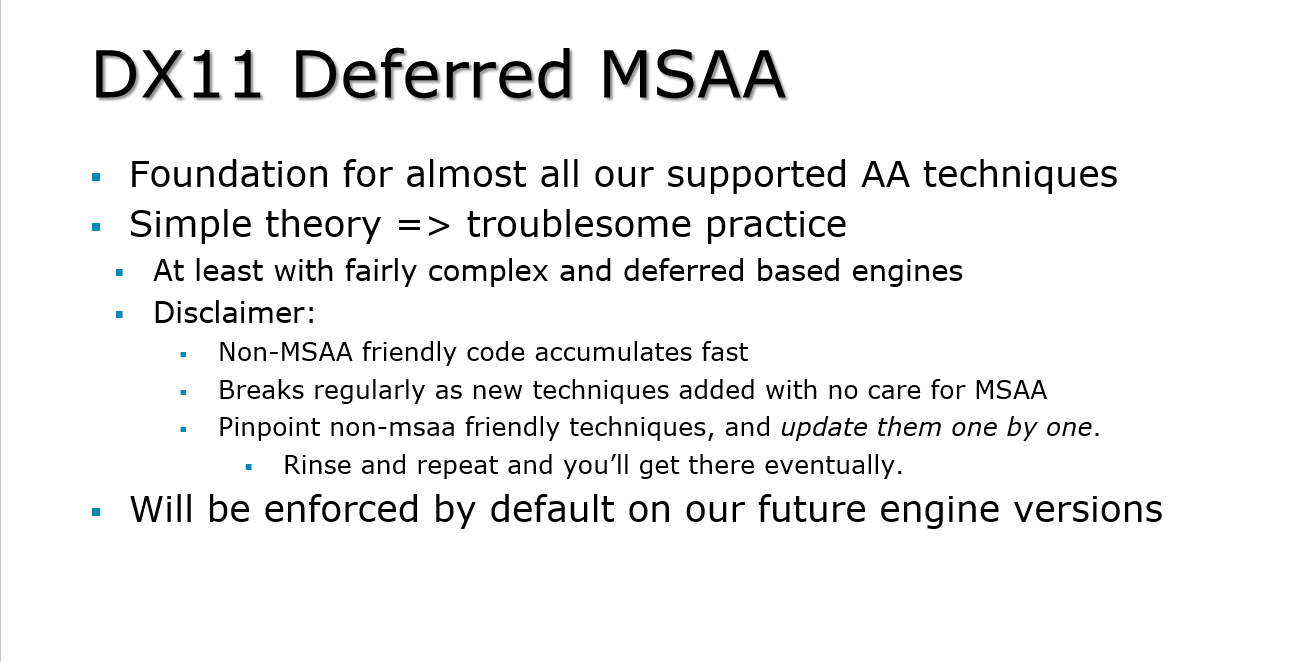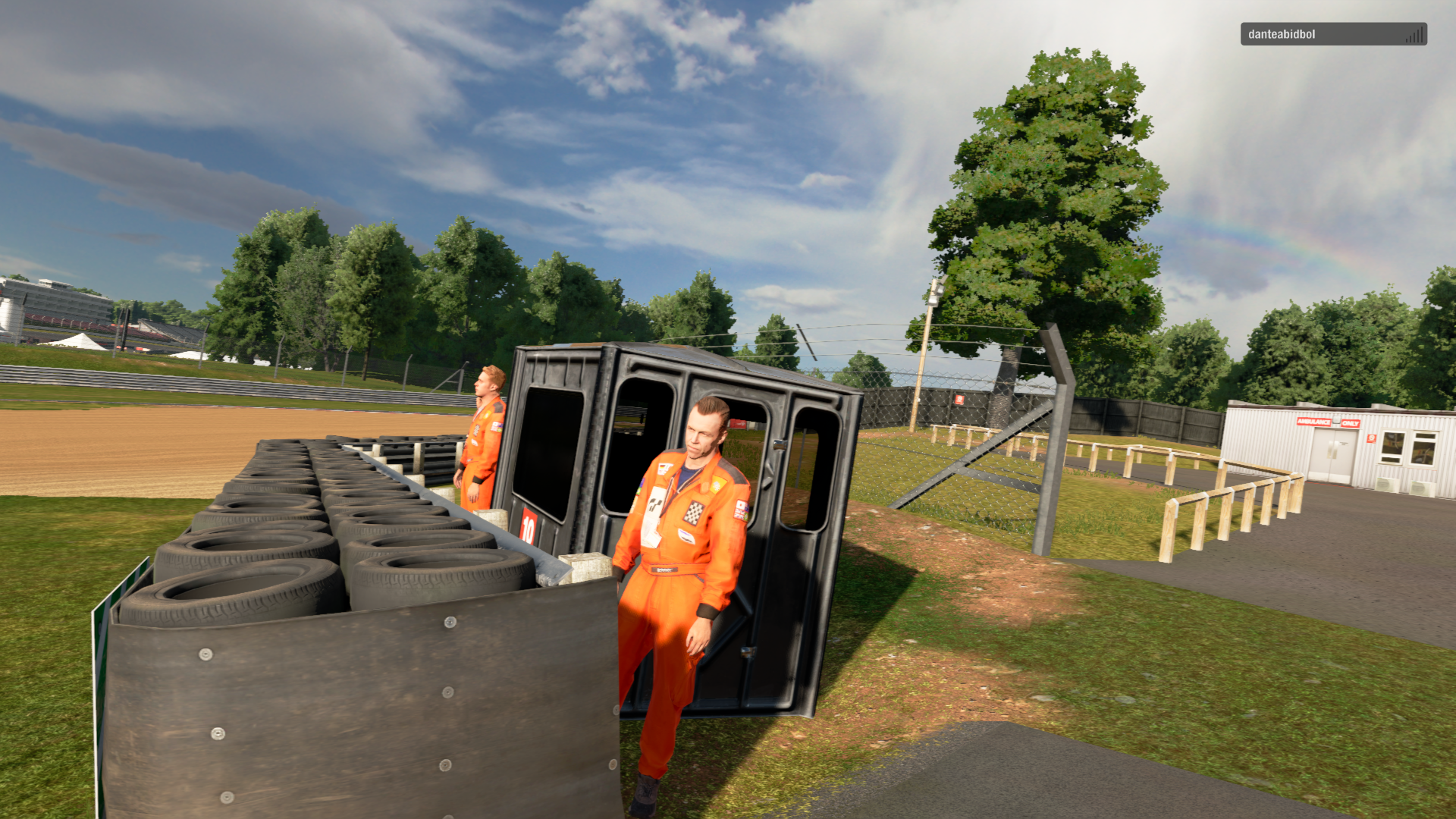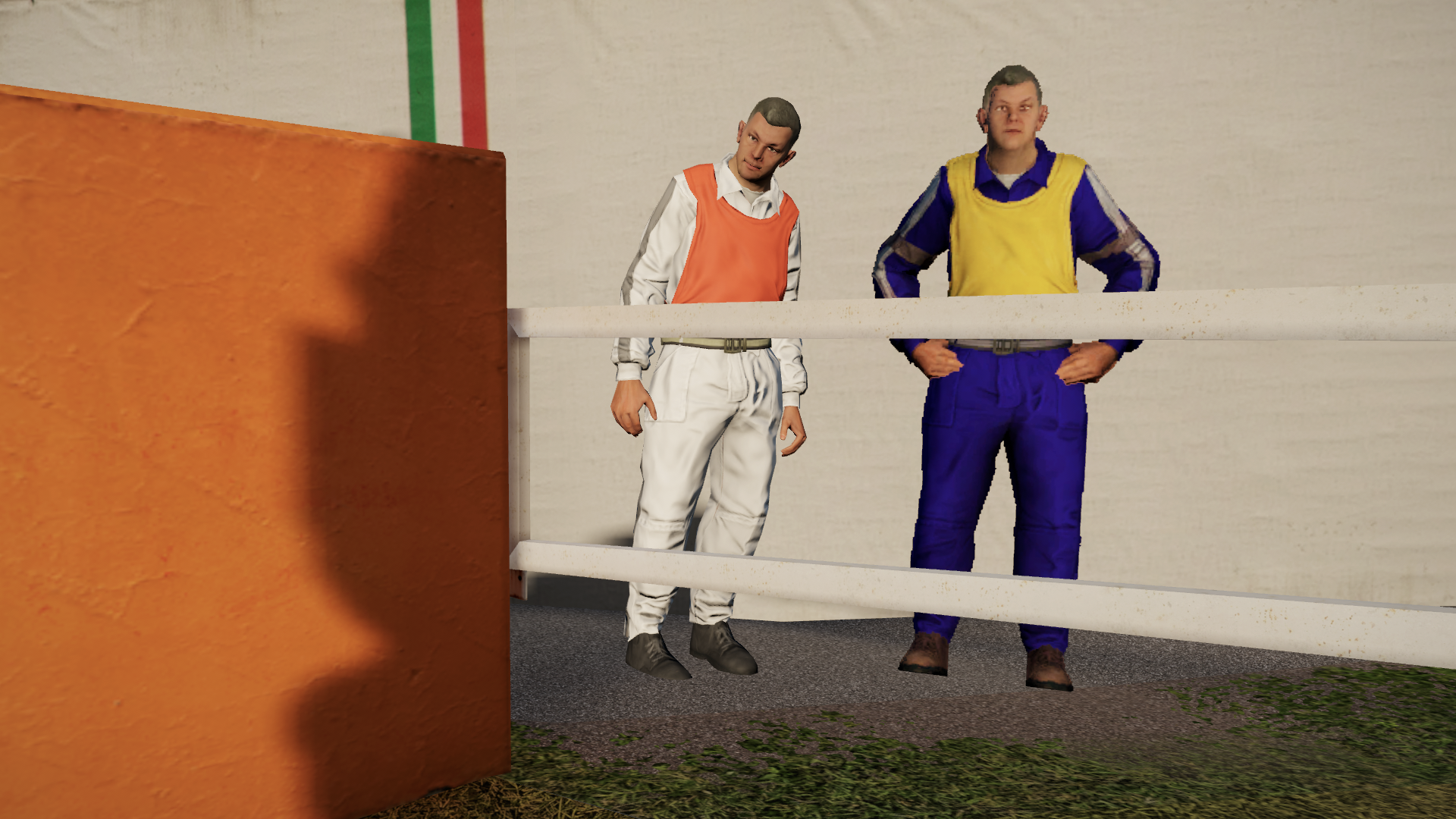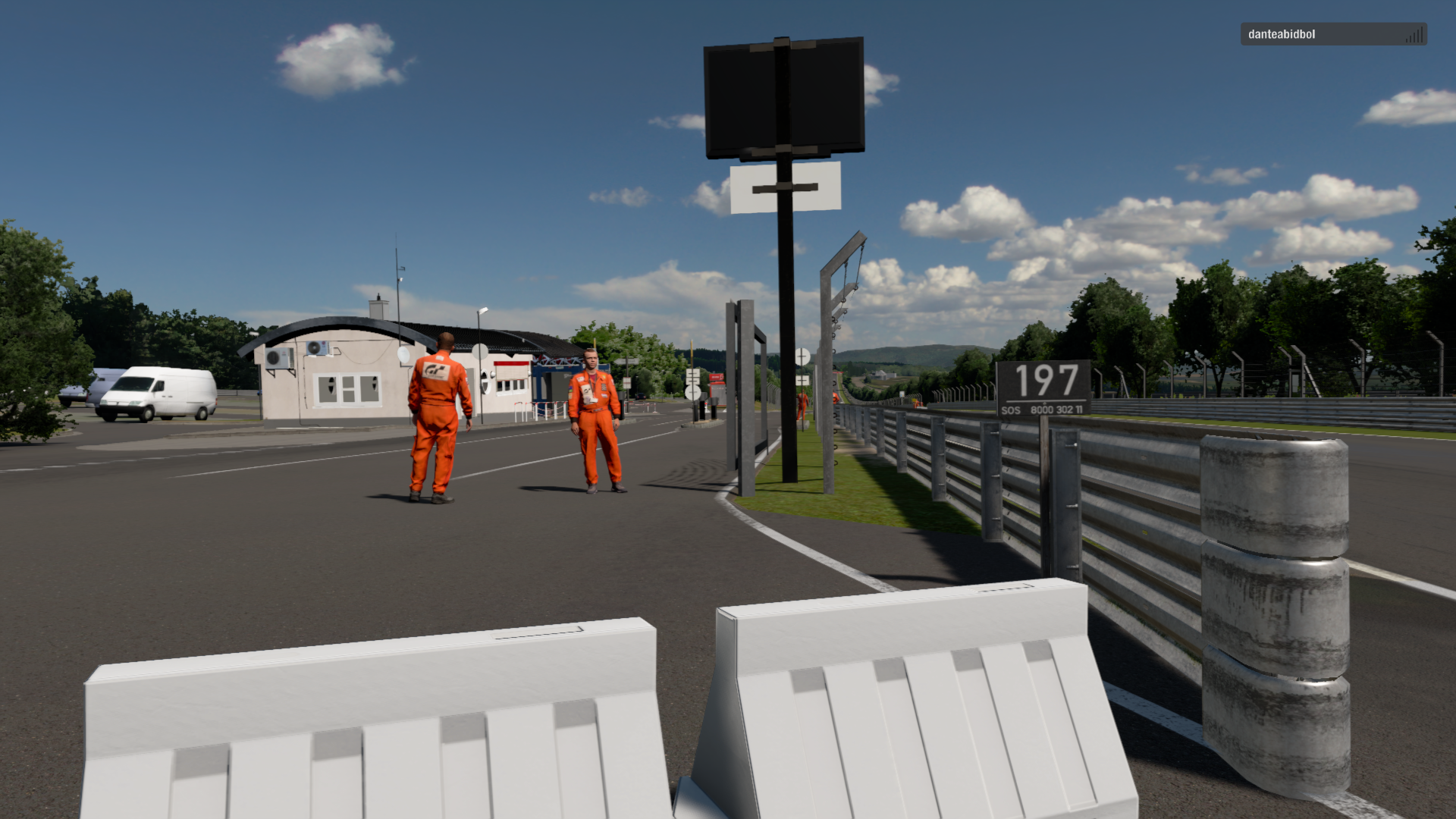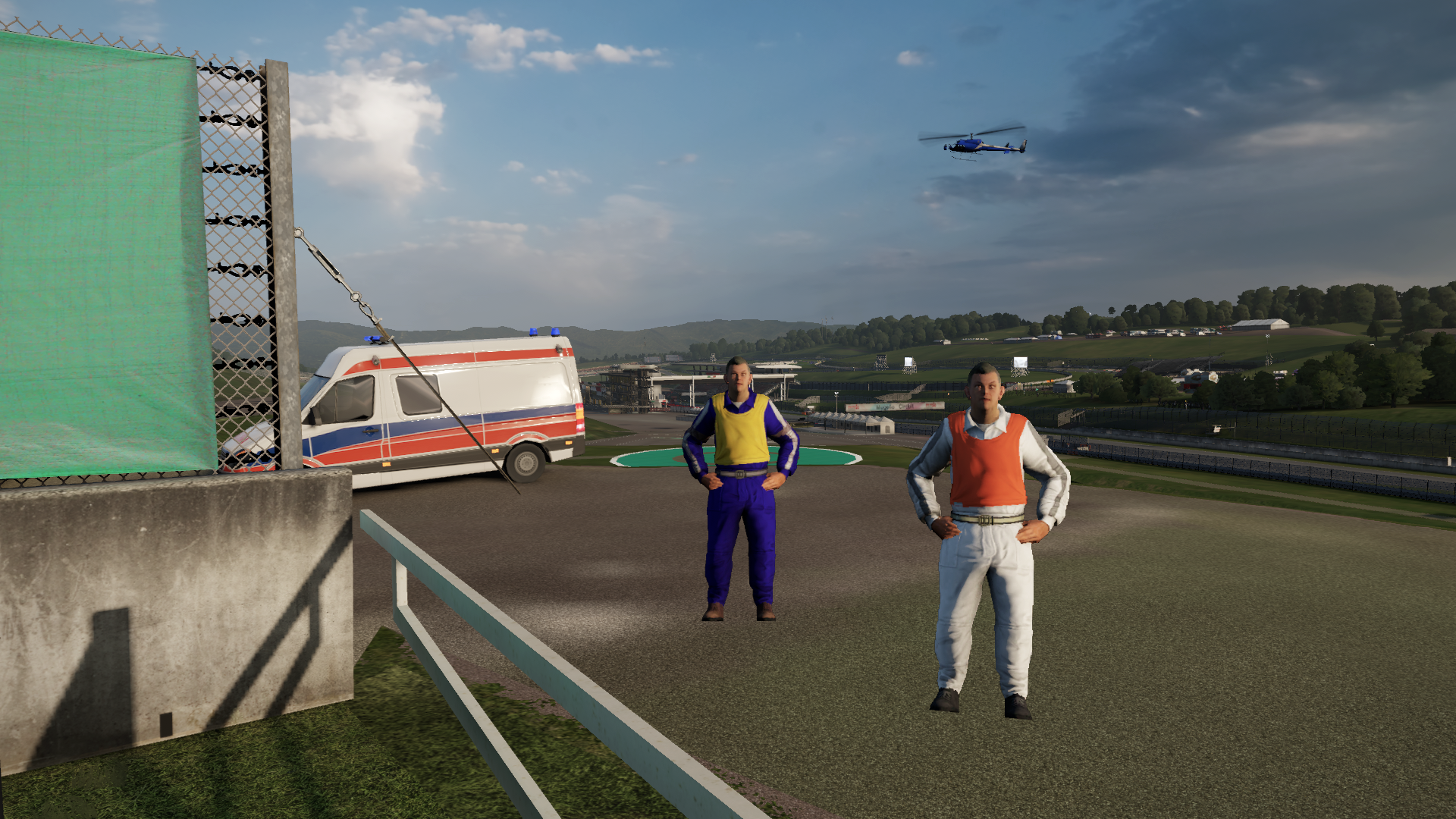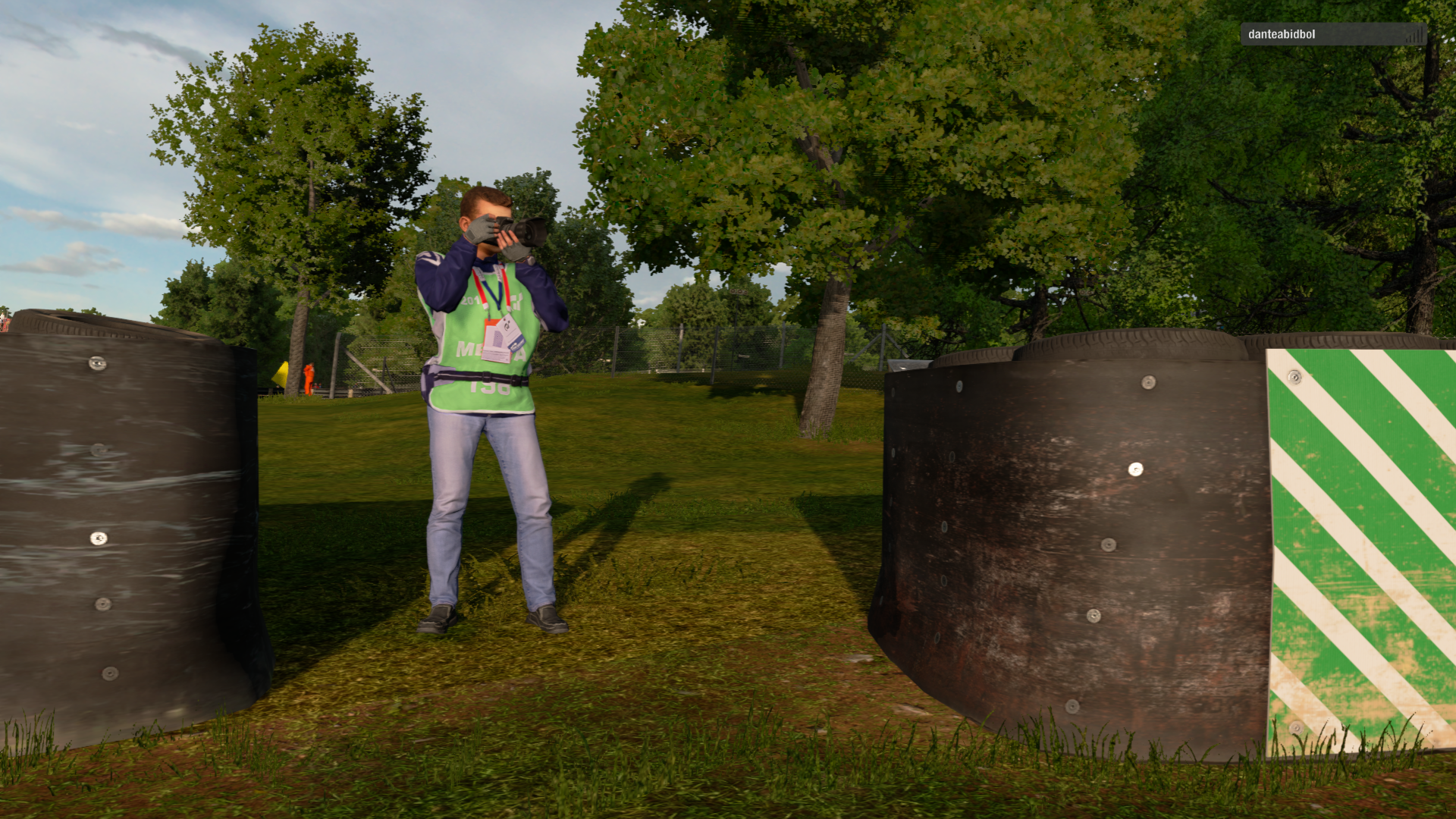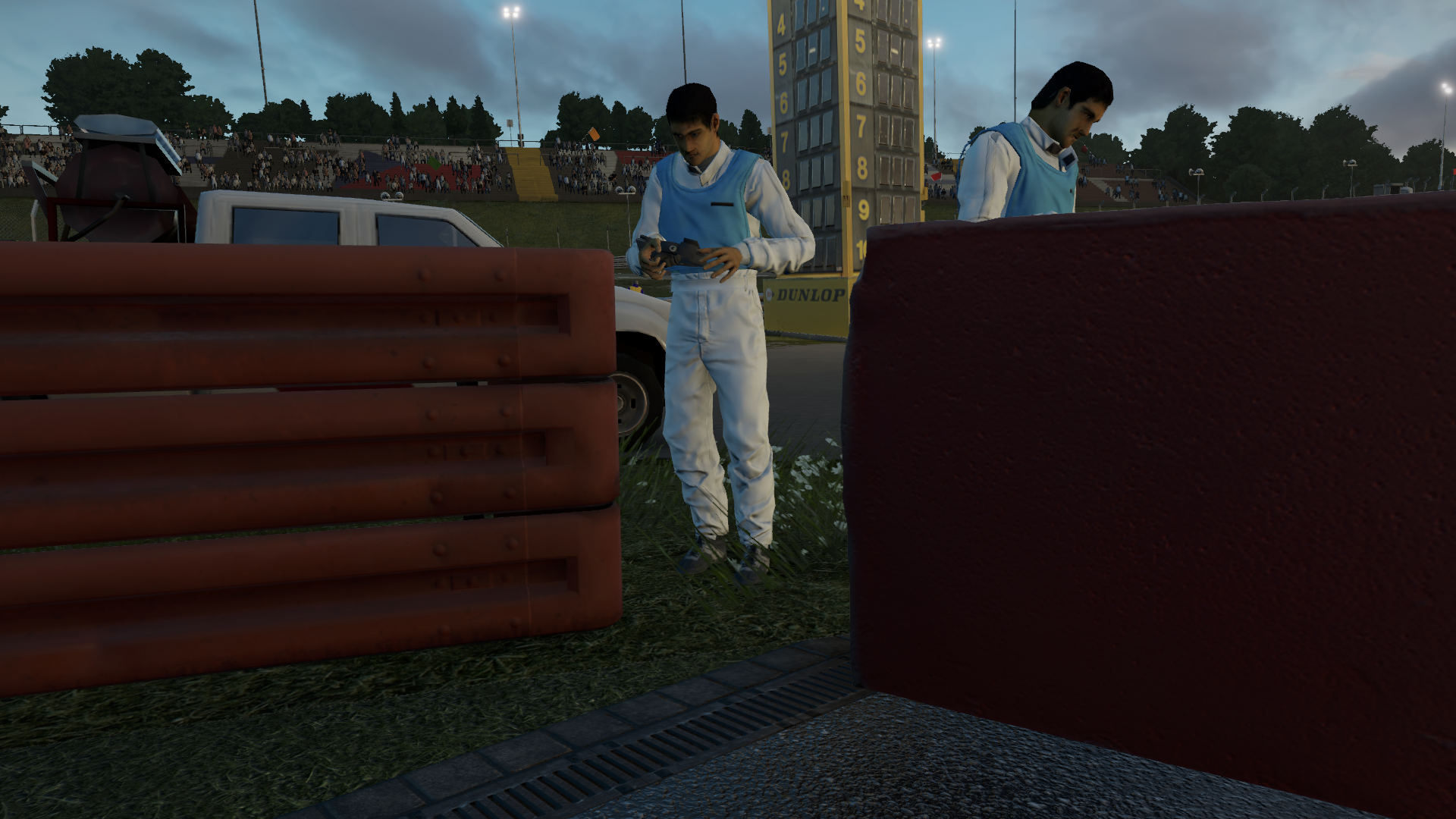I wonder what settings he was using in the Gamersyde video though. Pcars 1 did have terrible aliasing issues, which is partially why it was unplayable in the Oculus Rift to me but with my gtx1080 and MSAA on high, which I believe is 8X, PCars 2 looks good in regards to aliasing and shimmer in motion, especially in VR.
You are using an out of date browser. It may not display this or other websites correctly.
You should upgrade or use an alternative browser.
You should upgrade or use an alternative browser.
Next-gen Racing Graphics Face-off | (Next-gen means current-gen)
- Thread starter Gestault
- Start date
judge aliasing in motion, where all of pcars options fail miserably until the level of downsampling gets high enough which is just a monstrous waste of gpu power. gamersyde pcars videos are on a gtx1080. you can see by their own video how awful IQ is to hit 60 fps on that gpu. meanwhile gt sport on a base ps4 looks far cleaner
Some of these modern games like Watch Dogs 2 the above stated AA methods don't do shit. Maybe PCars is the same way? Have not played 2 so I have no idea. I bet MSAA works decently at least in some parts. SMAA and FXAA only really work with 4K imo when they are alone. MSAA seems dated and rarely works well with modern games alone.
Supersampling is super expensive. You really do need your own temporal methods along with tinkering to make a game look great by itself these days. I have to use 2xTXAA or whatever it is on Watch Dogs 2 despite the blur. I just can't stand those jaggies in that game.
Sebmugi
Member
Same thing can be said about Gran Turismo Sport.
Game looks bad during gameplay.
remji as usual always has a sweet word regarding GT sport XP
PC2 is like any other games of the genre except GT sport .. better in game than replay
this is where we see that we are in front of a video game while the illusion can remain during the gameplay ..
drotahorror
Member
MSAA seems dated and rarely works well with modern games alone.
what
I'm no expert, but isn't MSAA basically smart supersampling (using edge detection to avoid supersampling where it isn't needed)? I was under the impression that it's pretty much the next best thing to supersampling for eliminating aliasing.[...]I bet MSAA works decently at least in some parts. SMAA and FXAA only really work with 4K imo when they are alone. MSAA seems dated and rarely works well with modern games alone.
Supersampling is super expensive.
icecold1983
Member
what
hes right
Liabe Brave
Member
Yes, but only for geometric edges. It's my understanding that it doesn't do anything for other sources of high-contrast detail, such as shader aliasing.I'm no expert, but isn't MSAA basically smart supersampling (using edge detection to avoid supersampling where it isn't needed)? I was under the impression that it's pretty much the next best thing to supersampling for eliminating aliasing.
eso76
Member
gt sport wont win any graphic awards
It should.
I think it looks crazy good at times.
Can't understand what pcars2 looks like. It's gorgeous, it's meh, it's ugly.
drotahorror
Member
hes right
I disagree. MSAA is the best AA short of supersampling or some other form of expensive AA that I cant think the name of. I would rather have a jagged, clean mess with no AA than a blurry mess with fxaa, taa, etc.
QuantumZebra
Member
The honest answer is Driveclub but I'll be damned if I'm not perpetually stunned while playing Forza Horizon 3. God, what a game. Driveclub bikes is also secretly the best part of DC.
icecold1983
Member
I disagree. MSAA is the best AA short of supersampling or some other form of expensive AA that I cant think the name of. I would rather have a jagged, clean mess with no AA than a blurry mess with fxaa, taa, etc.
what are the most recent 3 games you think have had good msaa
Forza Horizon 3what are the most recent 3 games you think have had good msaa
icecold1983
Member
Forza Horizon 3
2 more? plz dont use forza apex, kind of the same game
Forza Horizon 22 more? plz dont use forza apex, kind of the same game
icecold1983
Member
Forza Horizon 2

i mean on pc
ethomaz
Banned
?what are the most recent 3 games you think have had good msaa
Every modern game can run with 8x or 4x MSAA.
Battlefield 1, DOOM, etc.
Edit - Maybe you want more modern... Destiny 2 with MSAA looks the best.
icecold1983
Member
?
Every modern game can run with 8x or 4x MSAA.
Battlefield 1, DOOM, etc.
Edit - Maybe you want more modern... Destiny 2 with MSAA looks the best.
do you even know what msaa is?
DOOM doesn't even have MSAA?
Every modern game can run with 8x or 4x MSAA.
Battlefield 1, DOOM, etc.
Edit - Maybe you want more modern... Destiny 2 with MSAA looks the best.
ethomaz
Banned
Yes.do you even know what msaa is?
Force at driver control panel.DOOM doesn't even have MSAA
icecold1983
Member
Yes.
Force at driver control panel.
yeah youre just clueless and cant even discern when msaa is being applied, further proven by the fact you listed destiny 2. broken msaa that isnt even applied to the majority of edges
Yes.
Force at driver control panel.
You're talking out of your ass.
drotahorror
Member
what are the most recent 3 games you think have had good msaa
Thats the thing, most devs dont have msaa as an option anymore because people cry about performance and say the port is shit. I just downsample most games or rock no AA.
I'm a bit surpsrised that you think msaa is bottom-tier.
icecold1983
Member
Thats the thing, most devs dont have msaa as an option anymore because people cry about performance and say the port is shit. I just downsample most games or rock no AA.
I'm a bit surpsrised that you think msaa is bottom-tier.
the way its being used these days it absolutely is bottom tier. a bit better than bog standard fxaa/smaa i suppose in terms of actually reducing aliasing
drotahorror
Member
the way its being used these days it absolutely is bottom tier. a bit better than bog standard fxaa/smaa i suppose in terms of actually reducing aliasing
Do you have any examples of MSAA that is done badly?
icecold1983
Member
Do you have any examples of MSAA that is done badly?
destiny 2, every single ubisoft game this gen, dues ex, cod ghosts, neir, pcars, xcom
forza games are good, crysis 3 was good and dice deferred aa was passable. the rest are trash
destiny 2, every single ubisoft game this gen, dues ex, cod ghosts, neir, pcars, xcom
forza games are good, crysis 3 was good and dice deferred aa was passable. the rest are trash
Well MSAA is garbage in Watch Dogs 2, but the MSAA+ option in Steep looks really good. That was a recent addition.
Everything looks like garbage but TXAA in Watch Dogs 2. And only at 2x or the picture becomes blurred beyond belief. WD2 has so many jaggies it is incredible.
I can only handle 1080p with my mostly ultra settings so I could never dream of 4K.
When there is a lot of sub pixel stuff, as in WD2, MSAA is a complete waste of your time for the most part.
icecold1983
Member
Well MSAA is garbage in Watch Dogs 2, but the MSAA+ option in Steep looks really good. That was a recent addition.
Everything looks like garbage but TXAA in Watch Dogs 2. And only at 2x or the picture becomes blurred beyond belief. WD2 has so many jaggies it is incredible.
I can only handle 1080p with my mostly ultra settings so I could never dream of 4K.
When there is a lot of sub pixel stuff, as in WD2, MSAA is a complete waste of your time for the most part.
txaa in watch dogs 2 sucks. if barely looks better than the msaa + smaa combination. that game has horrible IQ In general. the recently patched taa is the best option but the blur is so strong. the last game where txaa actually worked properly was ac unity. they manged to fix it after the 4th patch
Thats the thing, most devs dont have msaa as an option anymore because people cry about performance and say the port is shit. I just downsample most games or rock no AA.
I'm a bit surpsrised that you think msaa is bottom-tier.
Most devs don't use MSAA as an option anymore because most games these days use deferred rendering which doesn't really support MSAA very well
The reason MSAA doesn't work well in most modern games is that they mostly use a Deferred Shading which by nature makes MSAA more ineffective (as well as alpha materials etc, but then allows multitude of lights to be calculated much faster) and the workarounds for quality take extra computation times. It has little to do with it being done "badly" but a technical drawback of modern renderers. This of course then very much varies as to what type of materials the game is using etc. but in general MSAA is not really an effective or performant technique in games with deferred shading.
icecold1983
Member
Most devs don't use MSAA as an option anymore because most games these days use deferred rendering which doesn't really support MSAA very well
msaa can work fine in a deferred renderer under the current APIs it just has to be coded for from day 1. trying to hack in msaa to a pc port for a game never designed for it is the problem. but even so, good taa has made msaa redundant. why spend more gpu power for worse IQ. cryengine had great msaa as a deferred renderer but their taa obsoleted it
It has less to do with current APIs than the fact that whole approach is MSAA takes isn't as suitable with Deferred Shading as it is with Forward. You need to apply further passes/techniques to work around the deficiencies, which is computationally expensive and the end result still is technically not the same as MSAA in a forward lit scenario. A decent example: https://docs.nvidia.com/gameworks/c.../d3d_samples/antialiaseddeferredrendering.htmmsaa can work fine in a deferred renderer under the current APIs it just has to be coded for from day 1.
There's little "hacking" in MSAA or "coding it from day1", it's simply a part of the rendering pass just as any other and in real-life development scenario you rarely should use "does this work with MSAA well?" as a base decision-making criteria when factoring the whole rendering pipeline. What matters is does the decision support the overall vision of your visuals. CryEngine 3 had decent MSAA for Crysis 3 for example because the rendering pass itself was pretty well suited to hide it's deficiensies (like spec aliasing) and the fact that it also included a pass for foliage (which isn't necessary traditional MSAA because it can't do alpha properly in deferred context) and still was a very expensive option performance-wise. In fact, you can read up on Crytek's Siggraph presentations that aliasing issues were something they did not fix immediately in the engine when moving from Crysis 2 to 3, but instead found their solution later during the development.trying to hack in msaa to a pc port for a game never designed for it is the problem. but even so, good taa has made msaa redundant. why spend more gpu power for worse IQ. cryengine had great msaa as a deferred renderer but their taa obsoleted it
EDIT2: If you want to dig deeper into the reality, this is a good starting point (but for the real journey of development, I recommend going to through the whole Crytek rendering presentation archive): http://www.crytek.com/download/Sousa_Tiago_Rendering_Technologies_of_Crysis3.pptx
Example of how the problems are solved; in actual development scenario the team will create a multitude of issues and you face a multitude of problems just with wanting MSAA in a deferred context, and you solve them one-by-one until the result is acceptable and you've run out of time, rather than you just deciding to do it properly from day one and then everything will work. That said, if it's a priority it of course should be part of the process, since it's very easy to break and with deferred shading, it's not a simple system in deferred context when striving for quality and performance (unlike forward rendering, where it really is a simple part of the rendering pipeline and most features will naturally work with MSAA).
icecold1983
Member
It has less to do with current APIs than the fact that whole approach is MSAA takes isn't as suitable with Deferred Shading as it is with Forward. You need to apply further passes/techniques to work around the deficiencies, which is computationally expensive and the end result still is technically not the same as MSAA in a forward lit scenario. A decent example: https://docs.nvidia.com/gameworks/c.../d3d_samples/antialiaseddeferredrendering.htm
There's little "hacking" in MSAA or "coding it from day1", it's simply a part of the rendering pass just as any other and in real-life development scenario you rarely should use "does this work with MSAA well?" as a base decision-making criteria when factoring the whole rendering pipeline. What matters is does the decision support the overall vision of your visuals. CryEngine 3 had decent MSAA for Crysis 3 for example because the rendering pass itself was pretty well suited to hide it's deficiensies (like spec aliasing) and the fact that it also included a pass for foliage (which isn't necessary traditional MSAA because it can't do alpha properly in deferred context) and still was a very expensive option performance-wise. In fact, you can read up on Crytek's Siggraph presentations that aliasing issues were something they did not fix immediately in the engine when moving from Crysis 2 to 3, but instead found their solution later during the development.
EDIT2: If you want to dig deeper into the reality, this is a good starting point (but for the real journey of development, I recommend going to through the whole Crytek rendering presentation archive): http://www.crytek.com/download/Sousa_Tiago_Rendering_Technologies_of_Crysis3.pptx
Example of how the problems are solved; in actual development scenario the team will create a multitude of issues and you face a multitude of problems just with wanting MSAA in a deferred context, and you solve them one-by-one until the result is acceptable and you've run out of time, rather than you just deciding to do it properly from day one and then everything will work. That said, if it's a priority it of course should be part of the process, since it's very easy to break and with deferred shading, it's not a simple system in deferred context when striving for quality and performance (unlike forward rendering, where it really is a simple part of the rendering pipeline and most features will naturally work with MSAA).
Older apis like dx9 and dx10 were barriers for msaa in a deferred renderer crom what ive read from various developers. I also remember a crytek oaper saying msaa has to be accounted for from the beginning and that trying to add it in at the end of development or as an afterthought is the reason for poor results. Devs also continue to do the resolve before the tone mapping
That is true (MSAA didn't work properly in DX9 deferred renderer at all). But it doesn't mean MSAA works as effectively for Deferred Rendering as it does for Forward, it just enables to you to do it properly at all (though some developers did get MSAA in DX9, I believe Remedy and SMS being at least the two).Older apis like dx9 and dx10 were barriers for msaa in a deferred renderer crom what ive read from various developers.
That depends on what you want to achieve, of course it will be easier to implement MSAA if you want to make that a key factor of your rendering, but it will also mean you can't necessarily use or even test all rendering techniques properly, but that also applies to everything in the rendering pipeline. It's usually done before tone mapping because that's how deferred rendering works, you can't just apply MSAA to the buffers after the rendering and in the post-process pass, not without a high cost at least.I also remember a crytek oaper saying msaa has to be accounted for from the beginning and that trying to add it in at the end of development or as an afterthought is the reason for poor results. Devs also continue to do the resolve before the tone mapping
sems4arsenal
Member
Time to resurrect this thread now that PCARS 2 is out and there is a F7 demo.
GTS showed the new spark effects as well
https://twitter.com/JAGLeMans/status/910621038182064129
GTS showed the new spark effects as well
https://twitter.com/JAGLeMans/status/910621038182064129
GroinShooter
Member
Current footage of The Crew 2 shows the same stuttering problem than the first The Crew. That problem ruined the game for me.
Did the same for me, otherwise a great game imo. Really hope when it comes out that 2 doesn't suffer from the stutter issues of the first game.
Time to resurrect this thread now that PCARS 2 is out and there is a F7 demo.
GTS showed the new spark effects as well
https://twitter.com/JAGLeMans/status/910621038182064129
full video: https://www.youtube.com/watch?v=sO1oN5_DjhY.
Something I recorded from the Forza 7 demo:

The original:
http://xboxdvr.com/gamer/ShapeGSX/video/36810439

The original:
http://xboxdvr.com/gamer/ShapeGSX/video/36810439
Sebmugi
Member
sems4arsenal
Member
GT being a class leader in trackside detail is weird after GT6
blastprocessor
The Amiga Brotherhood
https://youtu.be/N4mXCnjYhnA
RE: P Cars 2
It looks great. It's also the only one of the three that features fully dynamic weather, time of day and time of year with 4 seasons on every single track.
Anti-aliasing is poor. Does this game not support TAA like GT Sport on PS4?
TheAdmiester
Member
Not the greatest pic due to the distance, but Forza 7's photogrammetry assets are mindblowing. The little rock formation up on the left might be the most realistic small touch I've seen in a game.
icecold1983
Member
Not the greatest pic due to the distance, but Forza 7's photogrammetry assets are mindblowing. The little rock formation up on the left might be the most realistic small touch I've seen in a game.
yeah the new tracks or redone tracks look much better than previous forzas. i wonder how much improvement the other tracks exhibit if any
Anti-aliasing is poor. Does this game not support TAA like GT Sport on PS4?
nope. on consoles looks to be some fxaa/smaa variant and on pc you have those plus optional msaa which isnt well done at all and downsampling
Sebmugi
Member
Not the greatest pic due to the distance, but Forza 7's photogrammetry assets are mindblowing. The little rock formation up on the left might be the most realistic small touch I've seen in a game.
(Xbox one shoot) more closely it is a little less convincing but it remains suitable..more dubai circuit is the showcase of this new opus so they have well cared for .. it augurs very good for the future generation of console. .

Not the greatest pic due to the distance, but Forza 7's photogrammetry assets are mindblowing. The little rock formation up on the left might be the most realistic small touch I've seen in a game.
These shots don't look good at all(Xbox one shoot) more closely it is a little less convincing but it remains suitable..more dubai circuit is the showcase of this new opus so they have well cared for .. it augurs very good for the future generation of console. .

TheAdmiester
Member
(Xbox one shoot) more closely it is a little less convincing but it remains suitable..more dubai circuit is the showcase of this new opus so they have well cared for .. it augurs very good for the future generation of console. .

Much better shot, thanks. Still looks amazing IMO, bear in mind that you might be seeing a slightly lower quality than me since you're on console though.
Either way, even for Xbox is looks fantastic.
I thought the car shadows not projecting onto track barriers was supposed to be a a bug that got fixed but it's still there?(Xbox one shoot) more closely it is a little less convincing but it remains suitable..more dubai circuit is the showcase of this new opus so they have well cared for .. it augurs very good for the future generation of console. .

I thought the car shadows not projecting onto track barriers was supposed to be a a bug that got fixed but it's still there?
They fixed the fence that was posted.
Sebmugi
Member
small comparo GT sport beta/Project cars 2 ^^ on PS4 pro
Brands Hatch :
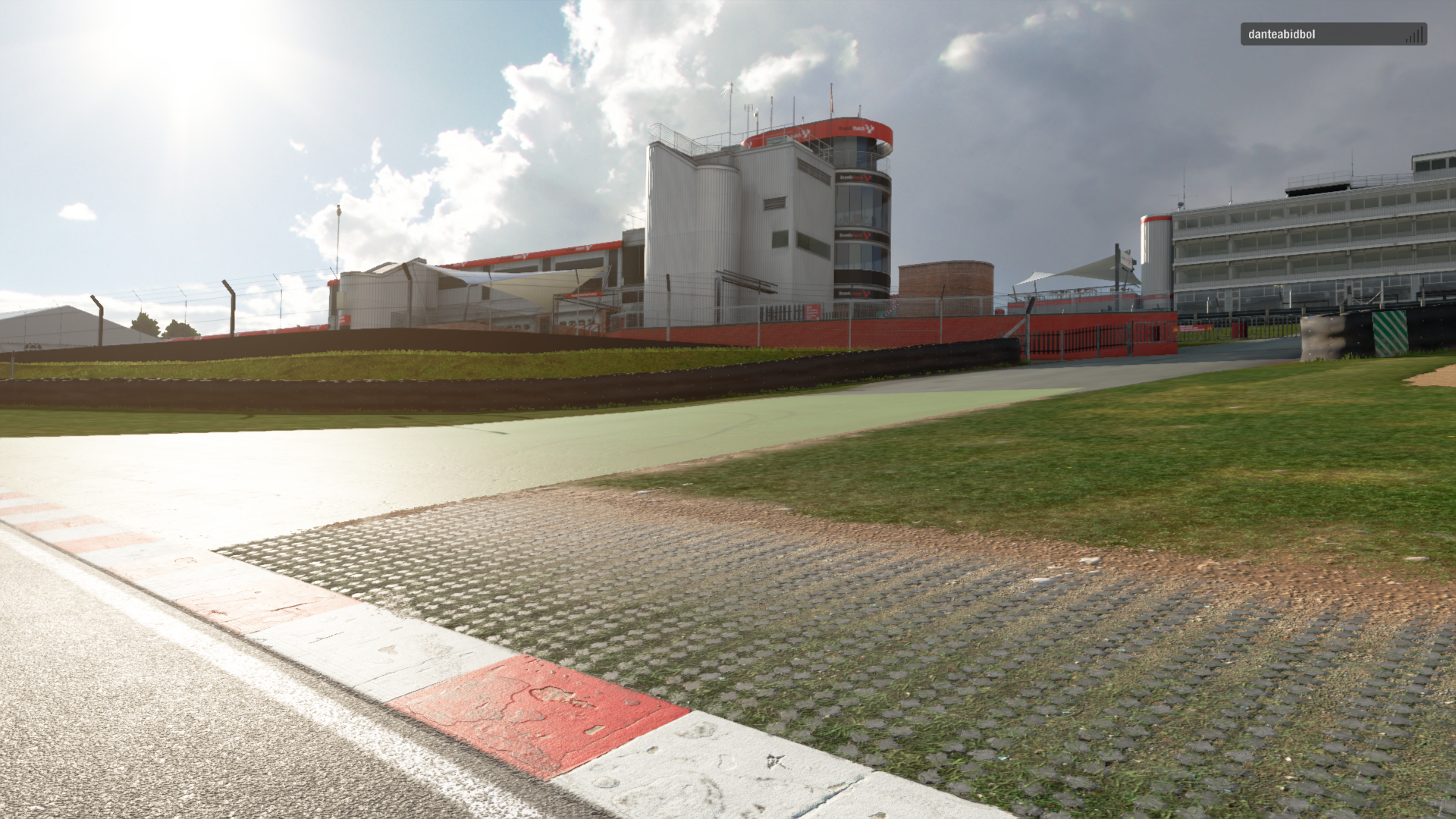
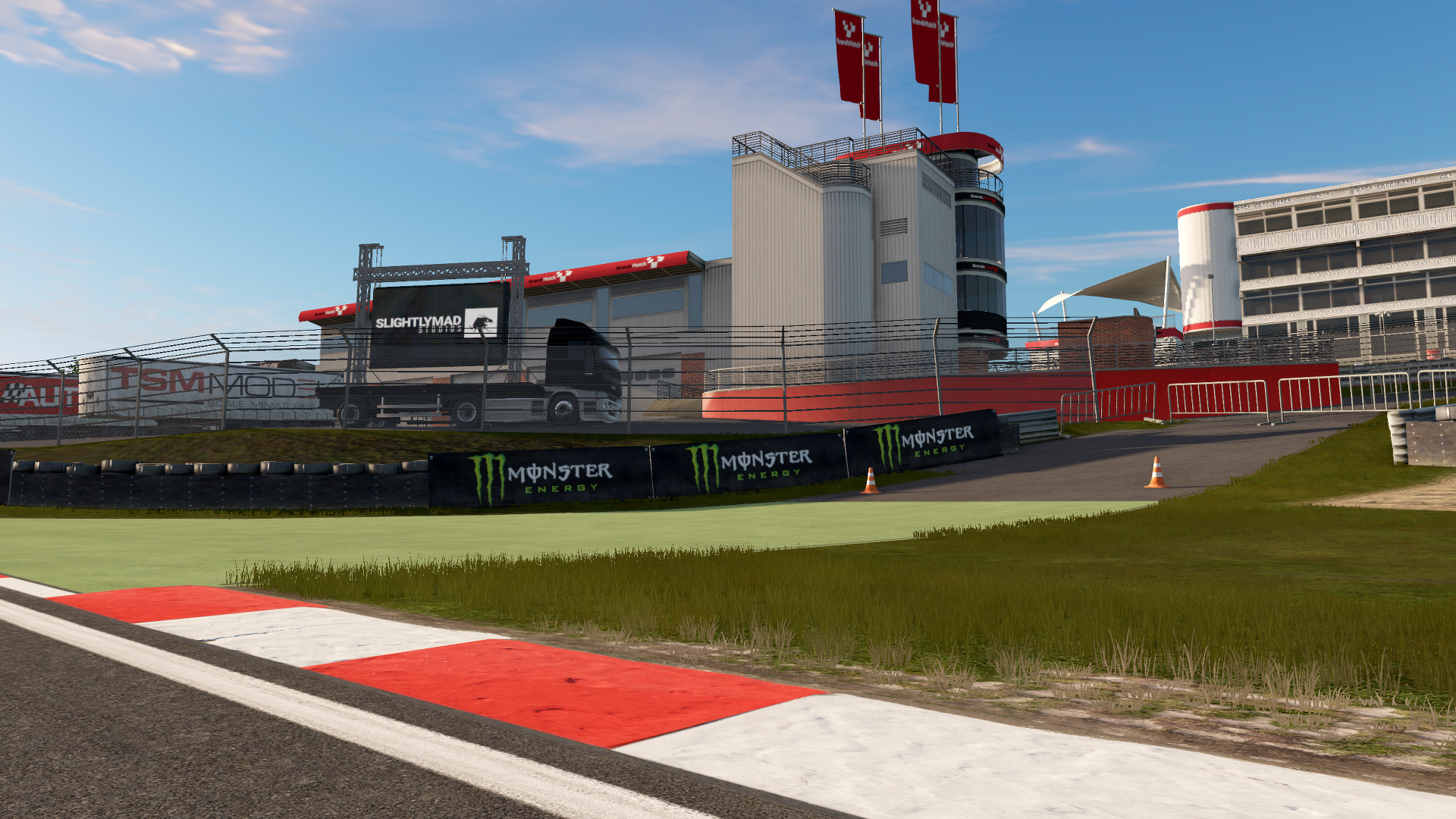
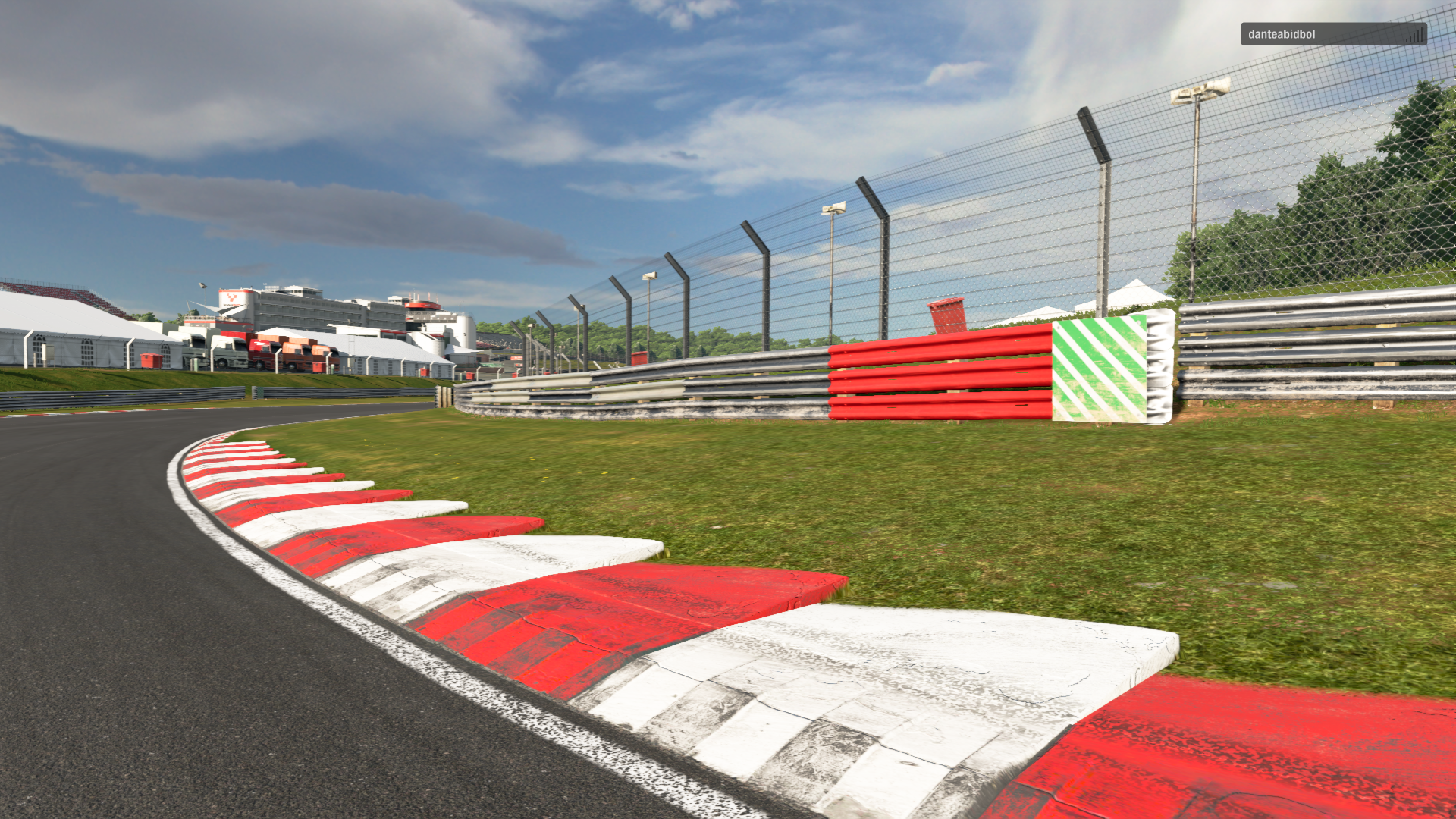
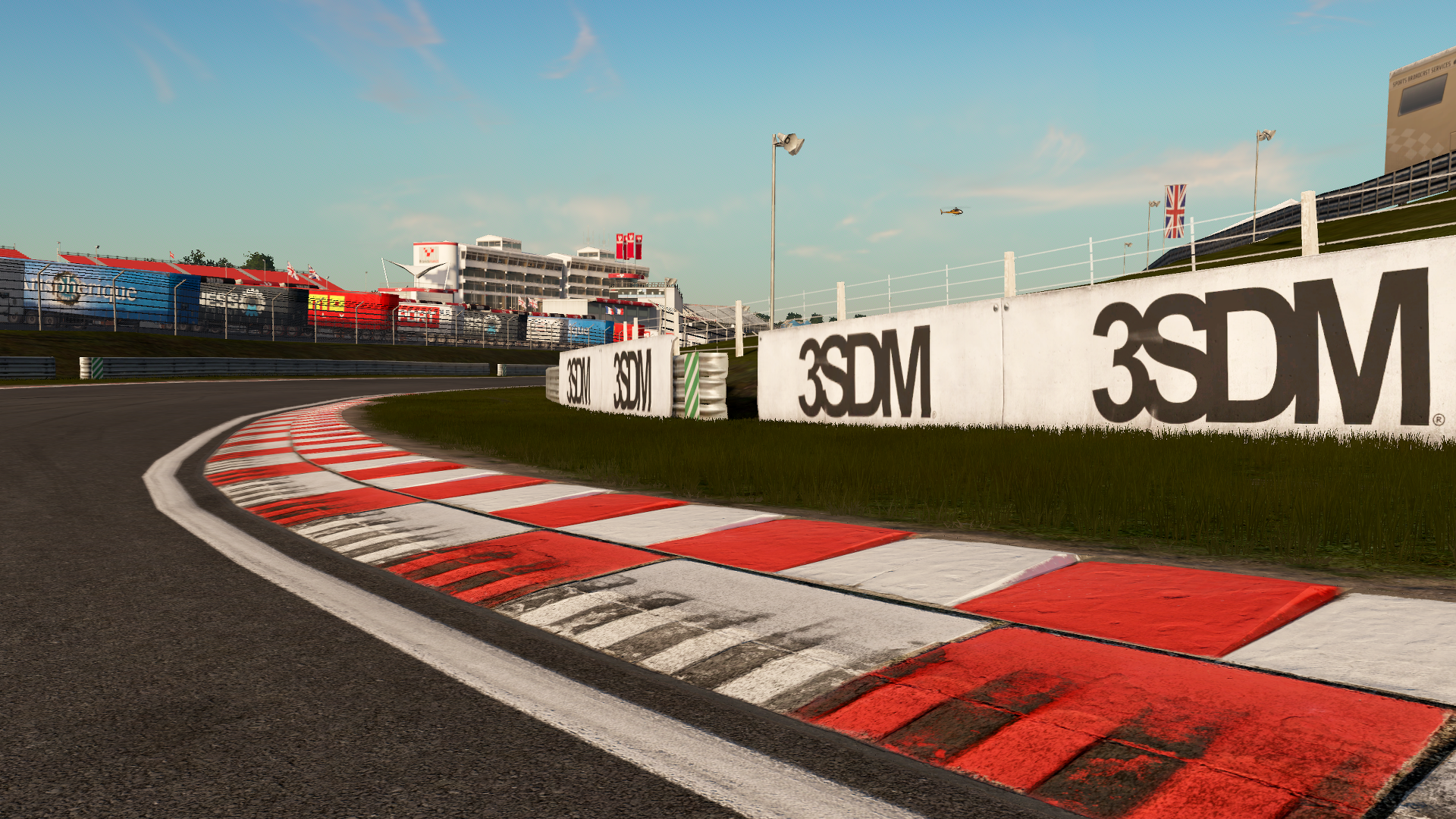
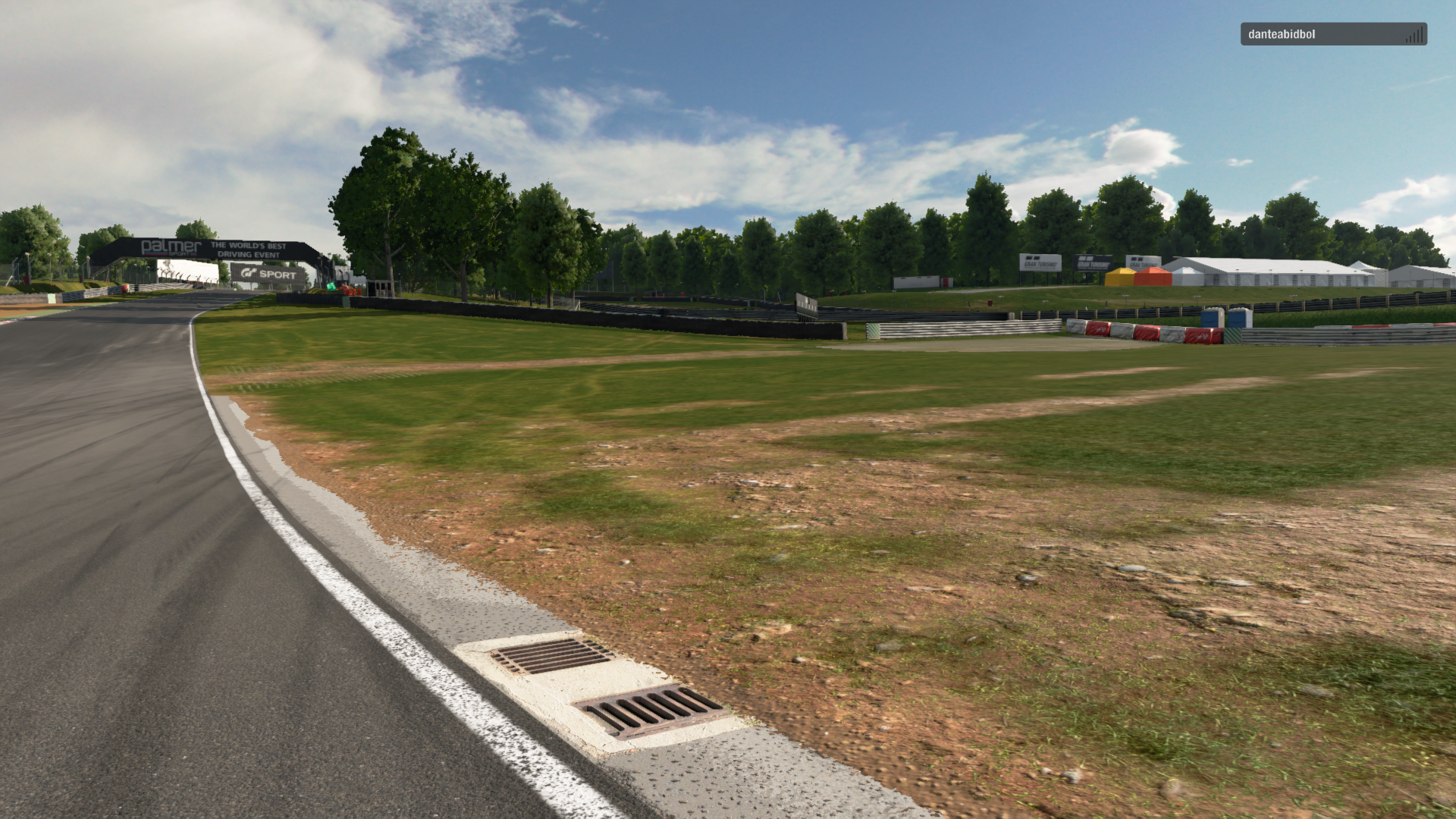
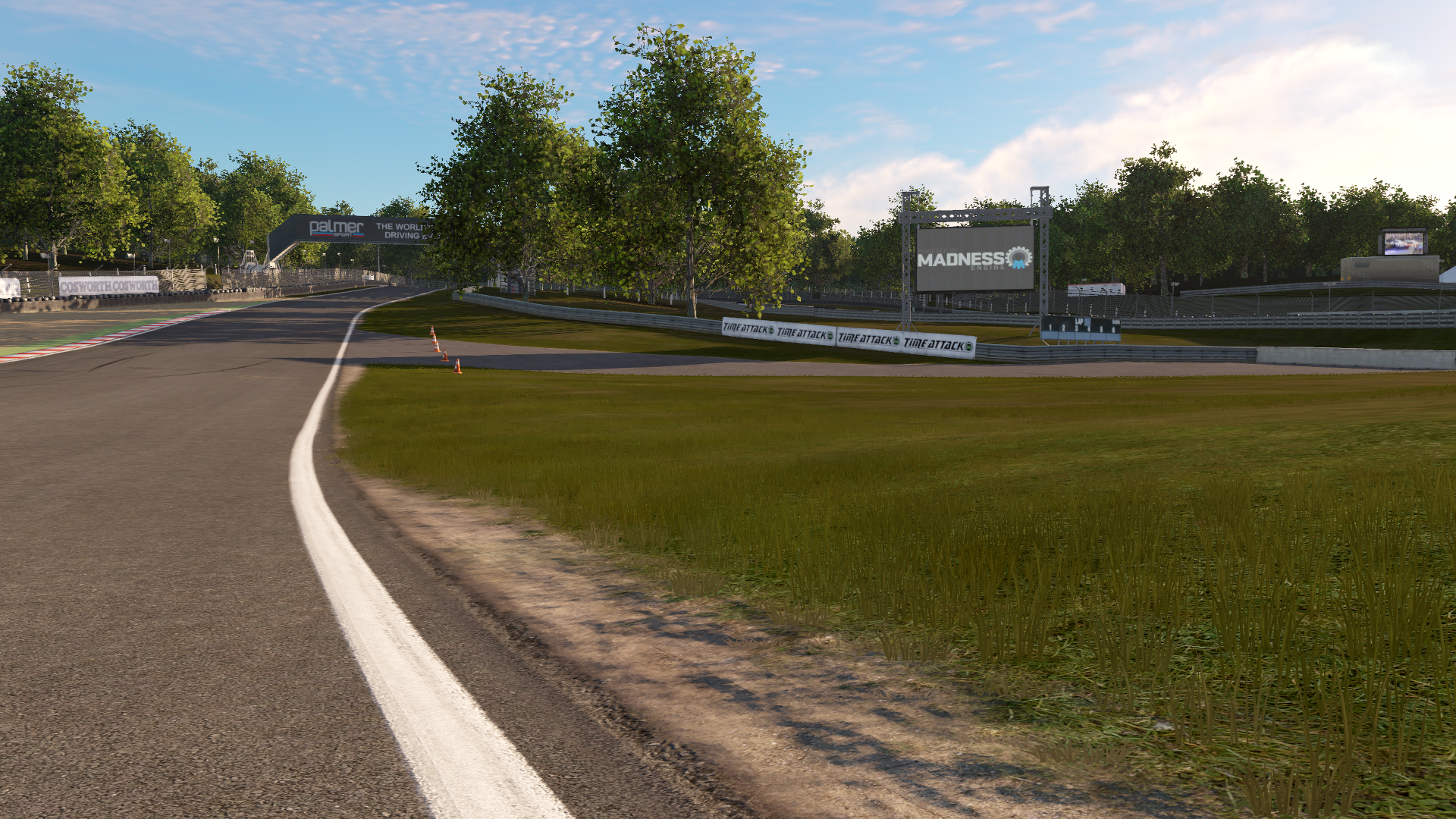
_____________________________________________________________________
Willow Springs :






______________________________________________________________________
Nürburgring :
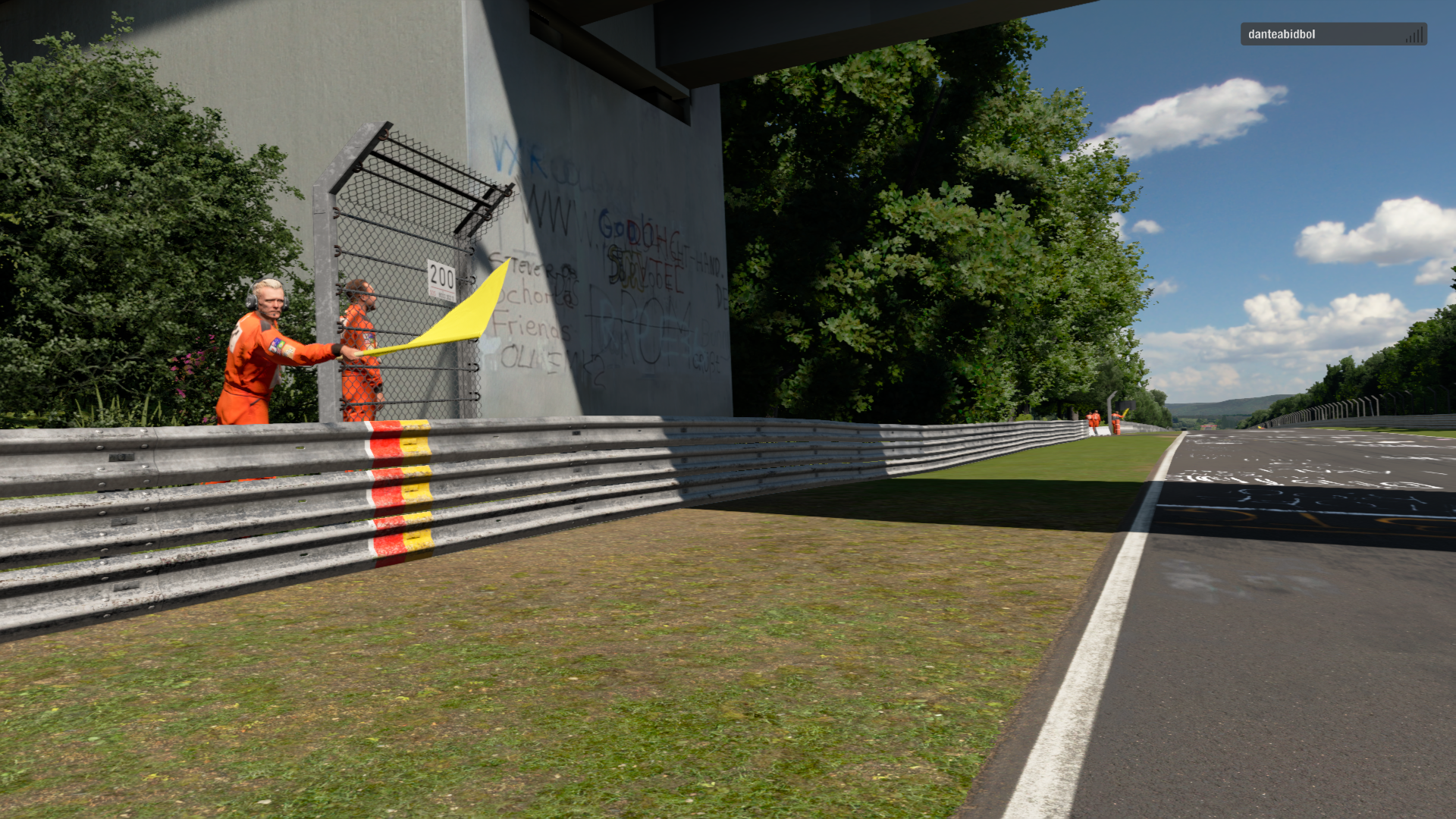
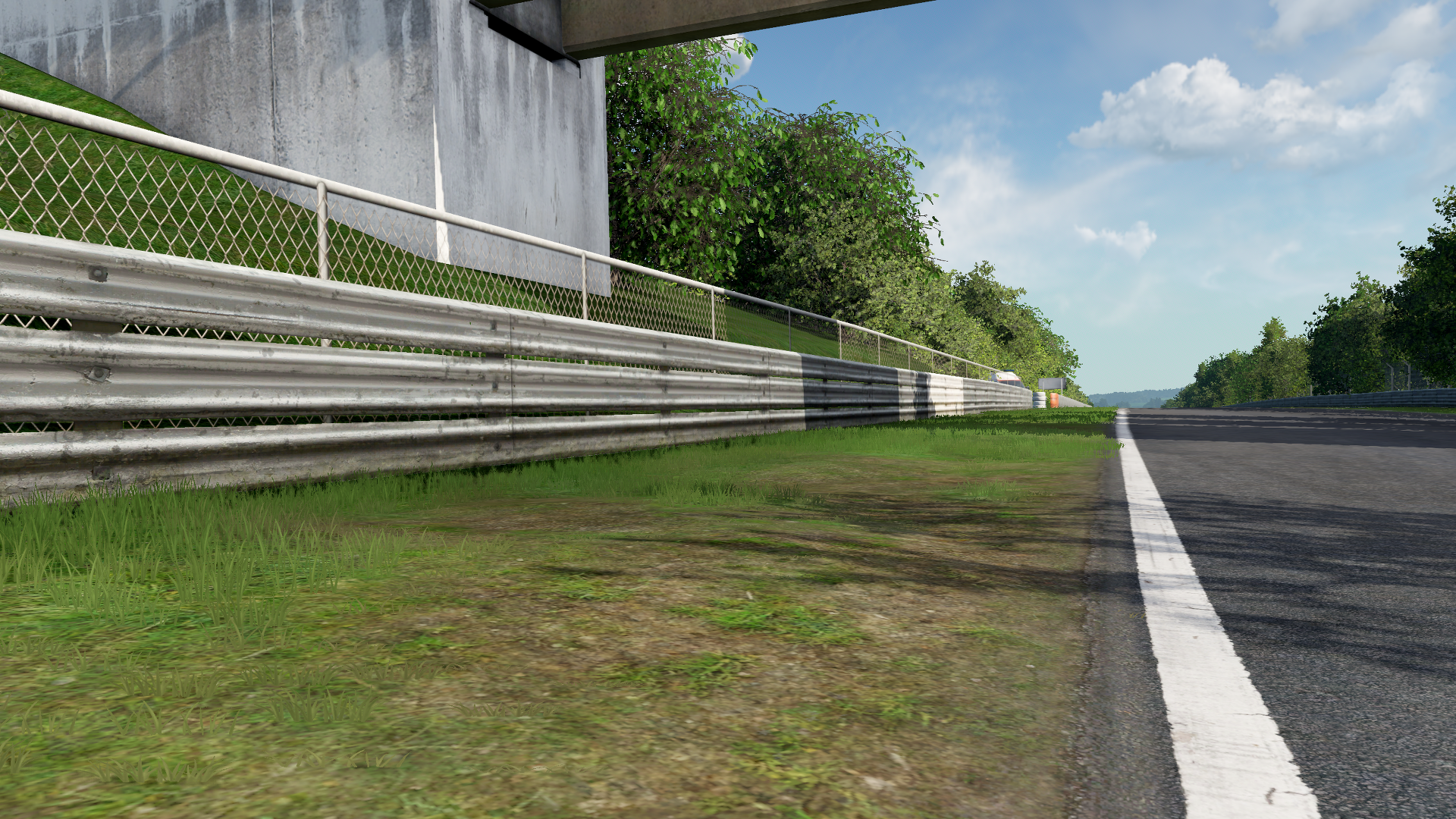
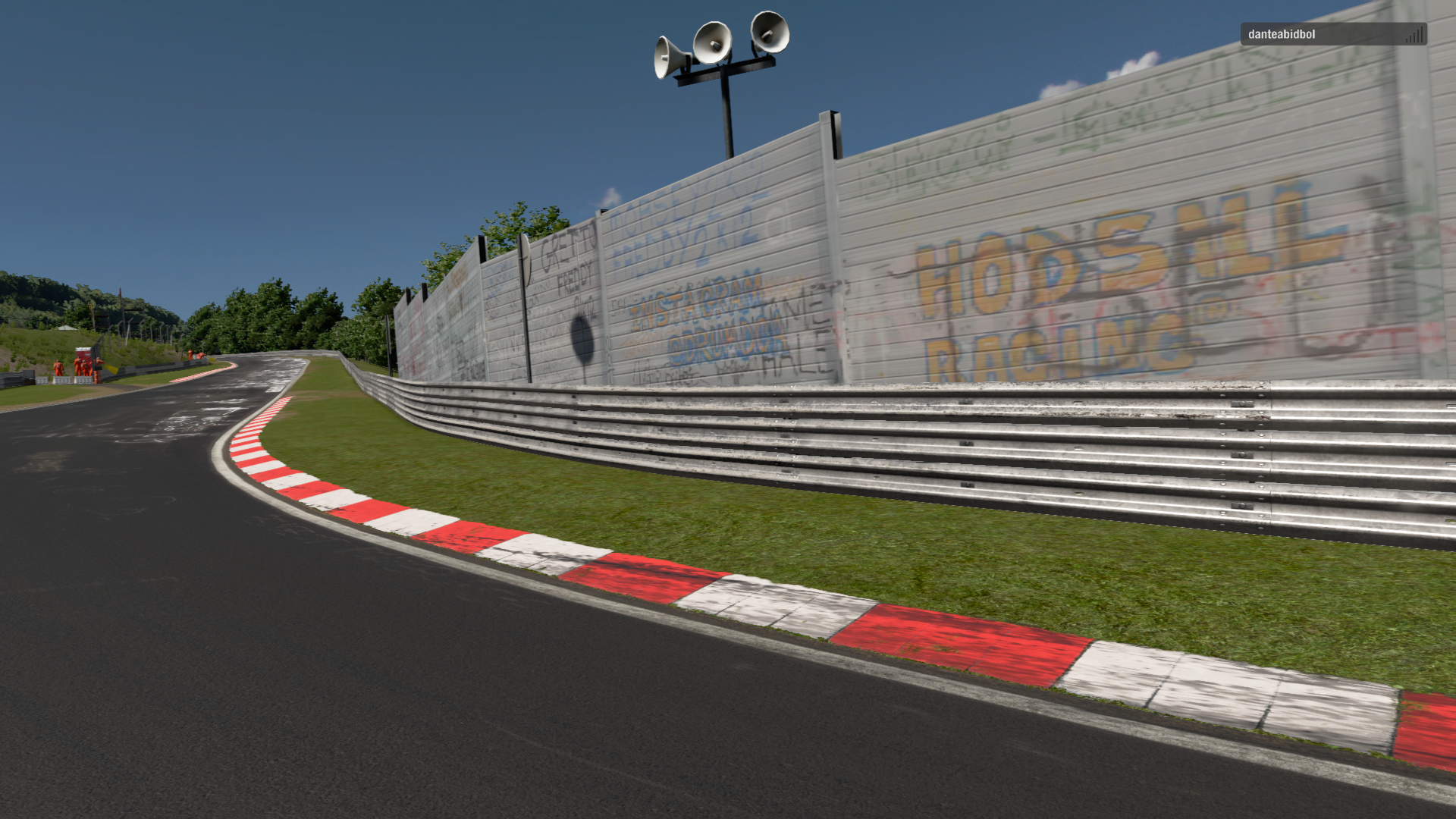
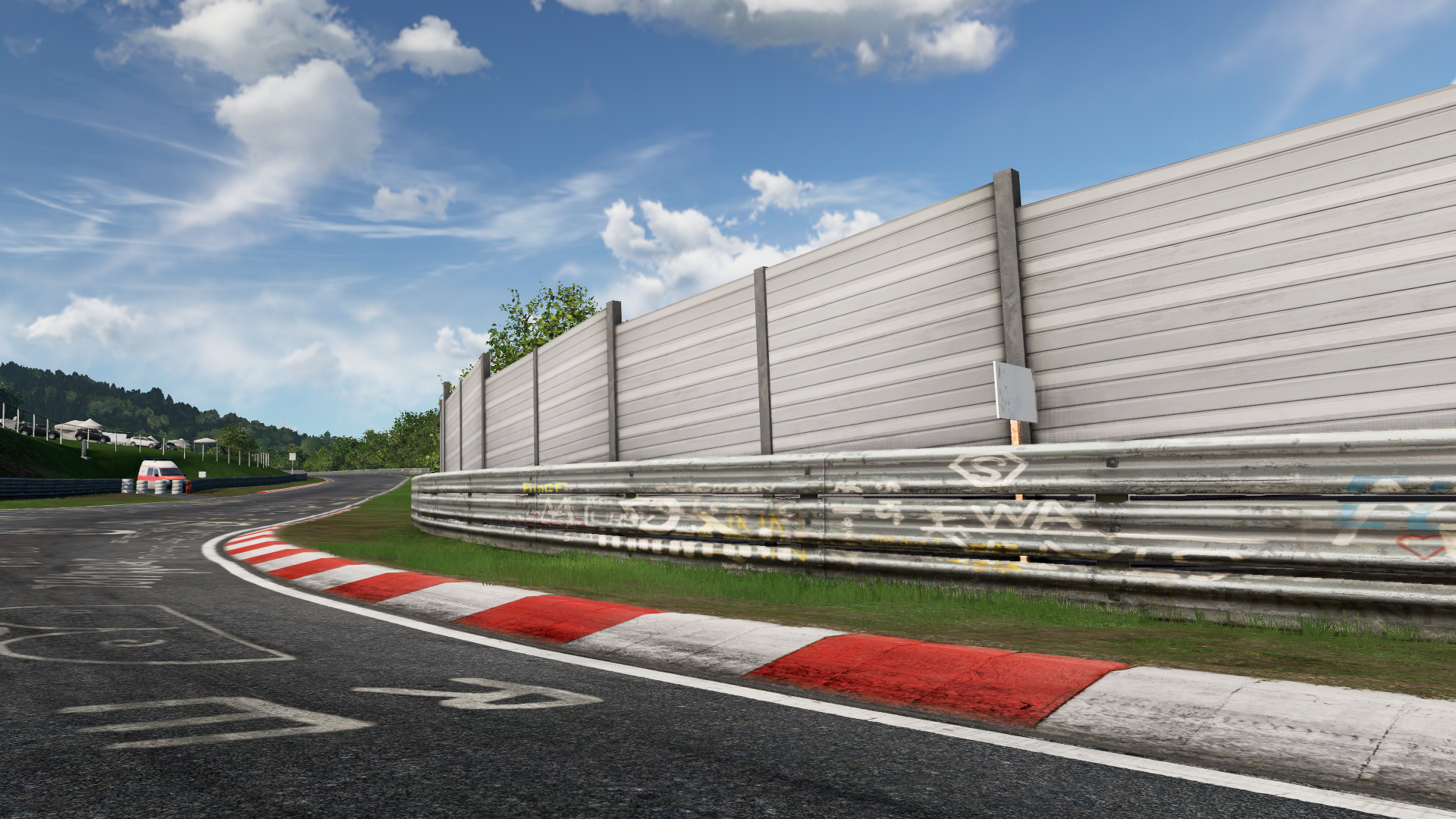
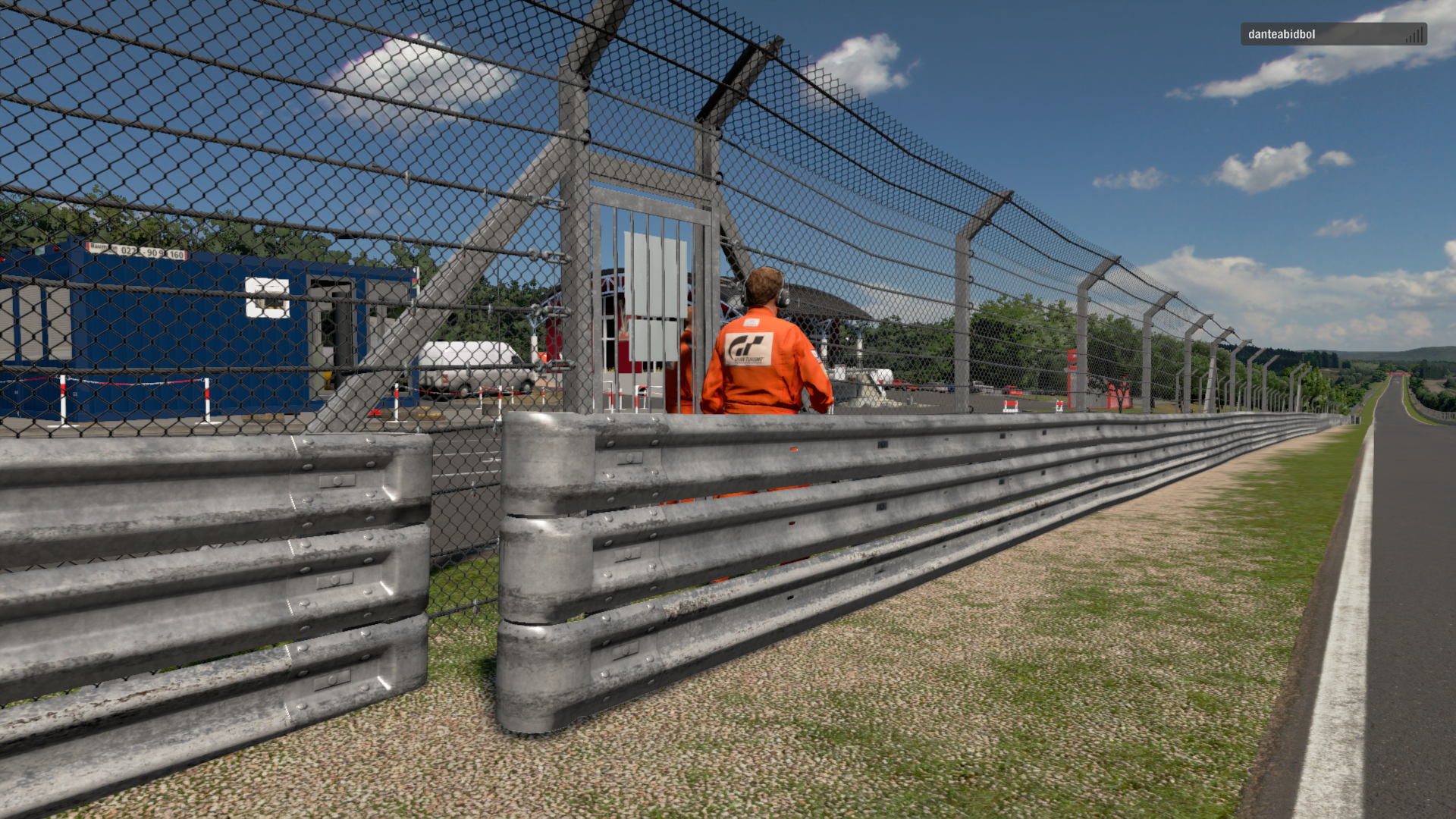
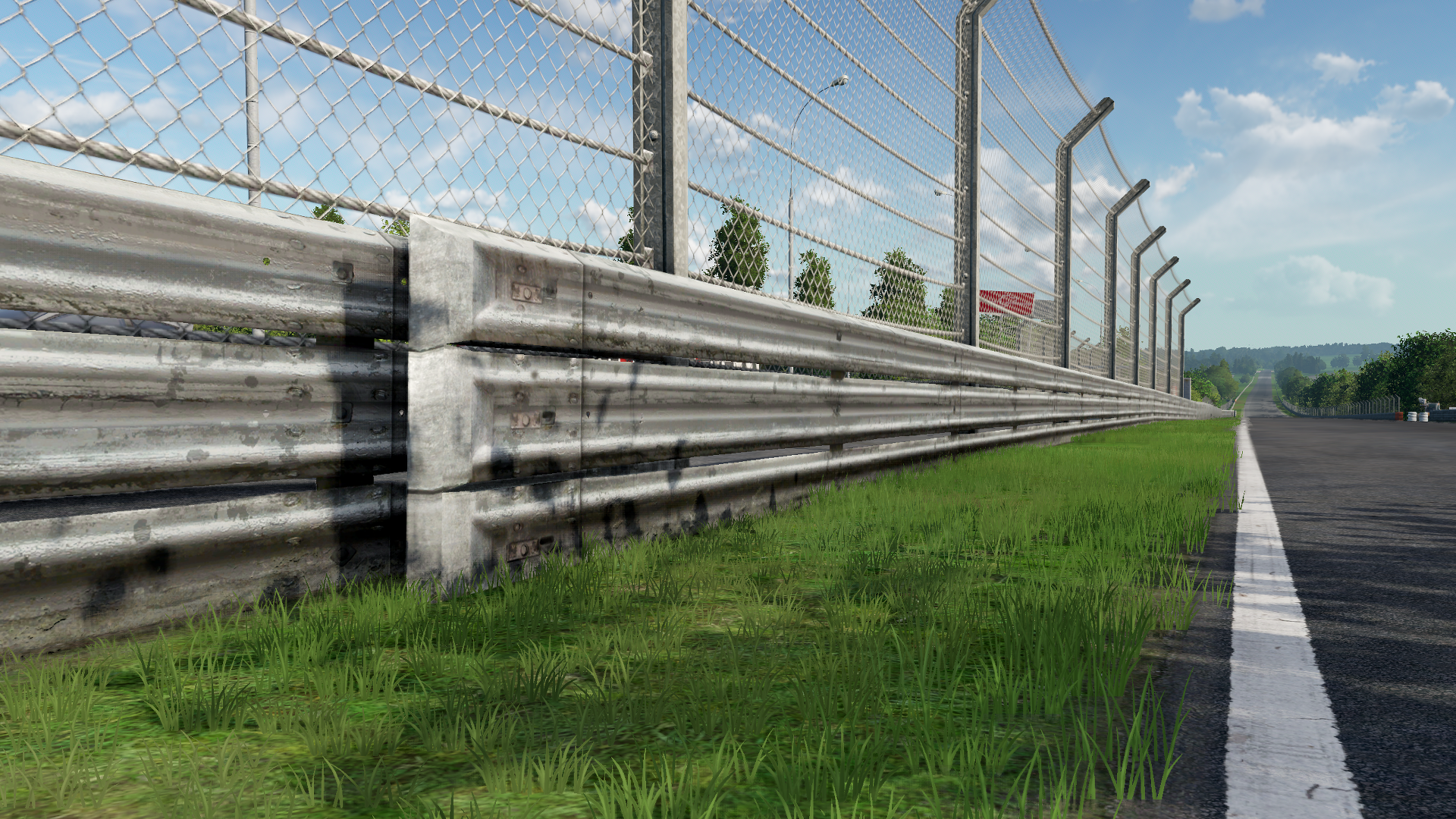
icecold1983
Member
pcars 2 looks embarrassing. and no playing it "at 4k maxed settings" doesnt change the fact

